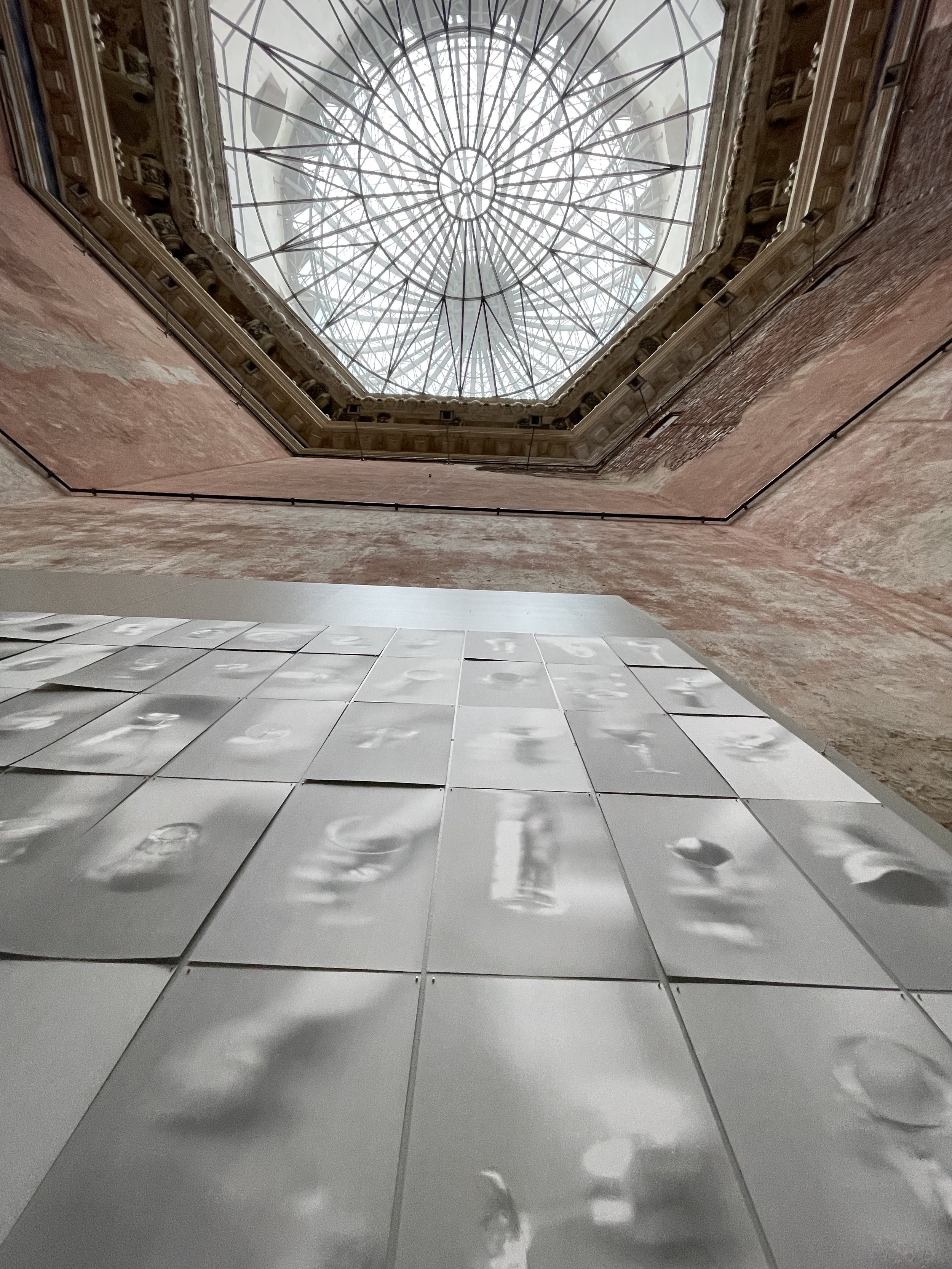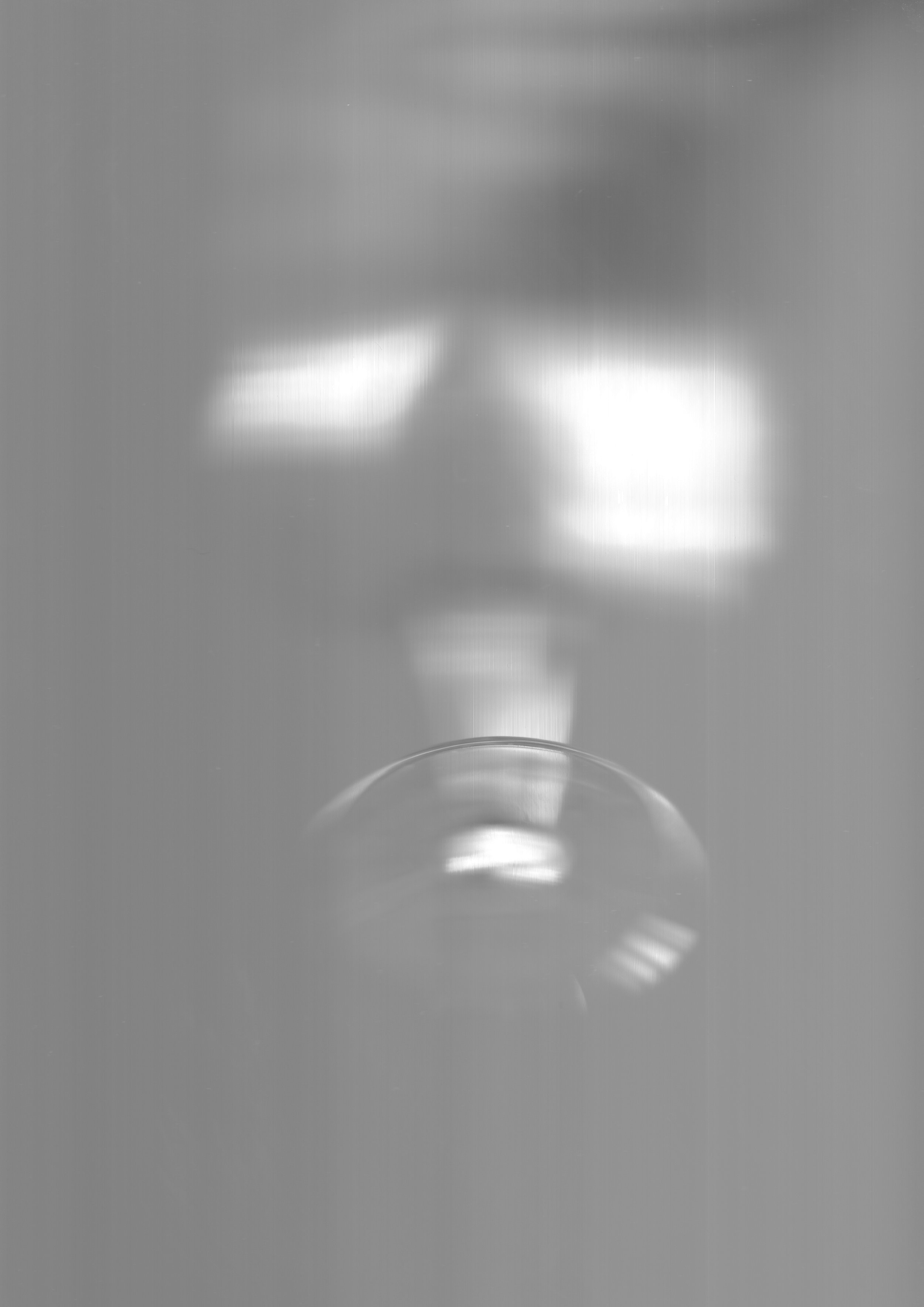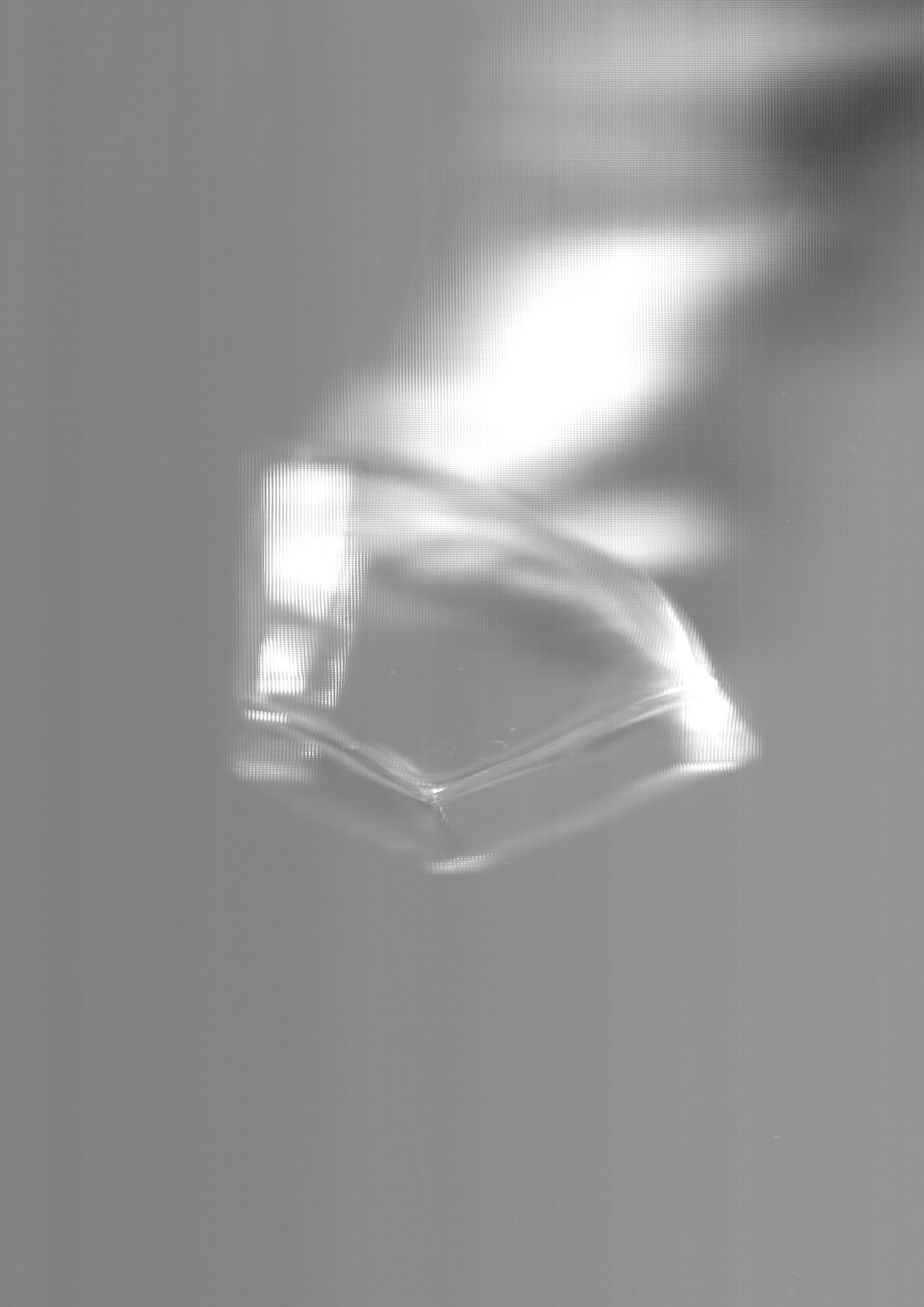Mundus patet
2022
Muro fotografico
270 x 360 cm
153 fotografie da scanner
stampe Fine art glicée
21 x 29,7 cm (singola fotografia)
audiovideo
“Altri sguardi_Oscillografie” 4’51”
Mundus patet
2022
Photographic wall
270 x 360 cm
153 photographs from scanner
fine art glycée prints
21 x 29.7 cm (each photograph) audio video
“Other looks_Oscillographs” 4'51"
Il progetto è stato selezionato nell’ambito di EU4Art-Project, ed esposto in VOM ÜBERSCHREITEN, TRANSITION, a cura di Susanne Greinke e Frizzy Kella, negli spazi dell’Oktogon Kunsthalle, der Hochschule für Bildende Künste di Dresda in Germania.
L’installazione, composta da un muro fotografico e un video, fa parte di un progetto più ampio che comprende un archivio di immagini realizzate con uno scanner, un video e una serie di mappe relative a una ricognizione dei luoghi di Amatrice dopo il terremoto del 2016. Il titolo, Mundus Patet, fa riferimento a un’antica festa romana che si teneva il 24 agosto sul Palatino e che celebrava il mondo dei defunti, ma anche ciò che è nascosto: il suolo, la terra.
Il 24 agosto 2016 il terremoto ha distrutto la casa di famiglia dell’artista e portato via tre persone care.
Il lavoro riflette su come l’umano sia costantemente intrecciato alla materia: oggetti, costruzioni, paesaggi e atmosfere si combinano con le nostre esistenze e influenzano le nostre storie in modi imprevedibili e misteriosi. Negli intrecci della materia si ritrovano le tracce dei diversi modi di abitare il mondo, frammenti di vite, culture e accadimenti che si legano e si sciolgono senza interruzione, tra realtà e ricordo, tra presente e passato. Il forte legame con la realtà materiale suggerisce che ascolto, attenzione e cura verso il mondo in cui siamo immersi, temporaneamente , dovrebbero costituire il fondamento del nostro modo di abitare la Terra.
L’archivio visivo è composto da 513 immagini realizzate mediante uno scanner utilizzato all’aperto, che permette di catturare l’atmosfera che avvolge gli oggetti, sospendendoli in un gioco di luci e ombre. L’insieme comprende 171 oggetti – per lo più frammenti di vetro appartenuti alla famiglia – 171 pietre che costituivano i muri della casa e 171 rami del meleto adiacente. Il video presenta una sequenza di immagini diagrammatiche della casa, del meleto e del paesaggio montano circostante, trasformate attraverso l’oscilloscopio. La traccia sonora, costituita da un canto di uccelli, è stata registrata durante un sopralluogo autunnale.
L’opera nel suo insieme si configura come un archivio intimo e sensibile, in cui la memoria prende corpo attraverso la materia, e la perdita si traduce in un atto di cura e consapevolezza verso il mondo.
The project was selected as part of the EU4Art-Project, and exhibited in VOM ÜBERSCHREITEN, TRANSITION, curated by Susanne Greinke and Frizzy Kella, in the spaces of the Oktogon Kunsthalle, der Hochschule für Bildende Künste in Dresden, Germany.
The installation ,which consists of a photographic wall and a video, is part of a larger project that includes an archive of images made with a scanner, a video and a series of maps related to a reconnaissance of places in Amatrice after the 2016 earthquake.
The title, “Mundus Patet”, refers to an ancient Roman festival held on August 24 on the Palatine Hill that celebrated the world of the dead, but also what is hidden: the soil, the earth. On August 24, 2016, the earthquake destroyed the artist's family home and took away three loved ones.
The work reflects on how the human is constantly intertwined with matter: objects, buildings, landscapes and atmospheres combine with our existences and influence our stories in unpredictable and mysterious ways. In the entanglements of matter we find the traces of different ways of inhabiting the world, fragments of lives, cultures and happenings that bind and dissolve without interruption, between reality and memory, between present and past. The strong connection with material reality suggests that listening, attention and care towards the world in which we are immersed, temporarily , should be the foundation of our way of inhabiting the Earth.
The visual archive consists of 513 images made by a scanner used outdoors, which also captures the atmosphere surrounding the objects, suspending them in light and shadows. The set includes 171objects - mostly glass fragments that belonged to the family - 171 stones that formed the walls of the house and 171 branches of the adjacent apple orchard. The video presents a sequence of diagrammatic images of the house, apple orchard and surrounding mountain landscape, transformed through the oscilloscope. The sound track, consisting of birdsong, was recorded during an autumn survey.
The work as a whole takes the form of an intimate and sensitive archive, in which memory takes shape through matter, and loss results in an act of care and awareness toward the world.
< works
< Du insoluj, 2023
“Altri sqaurdi_Oscillographs” , 2022 >

















